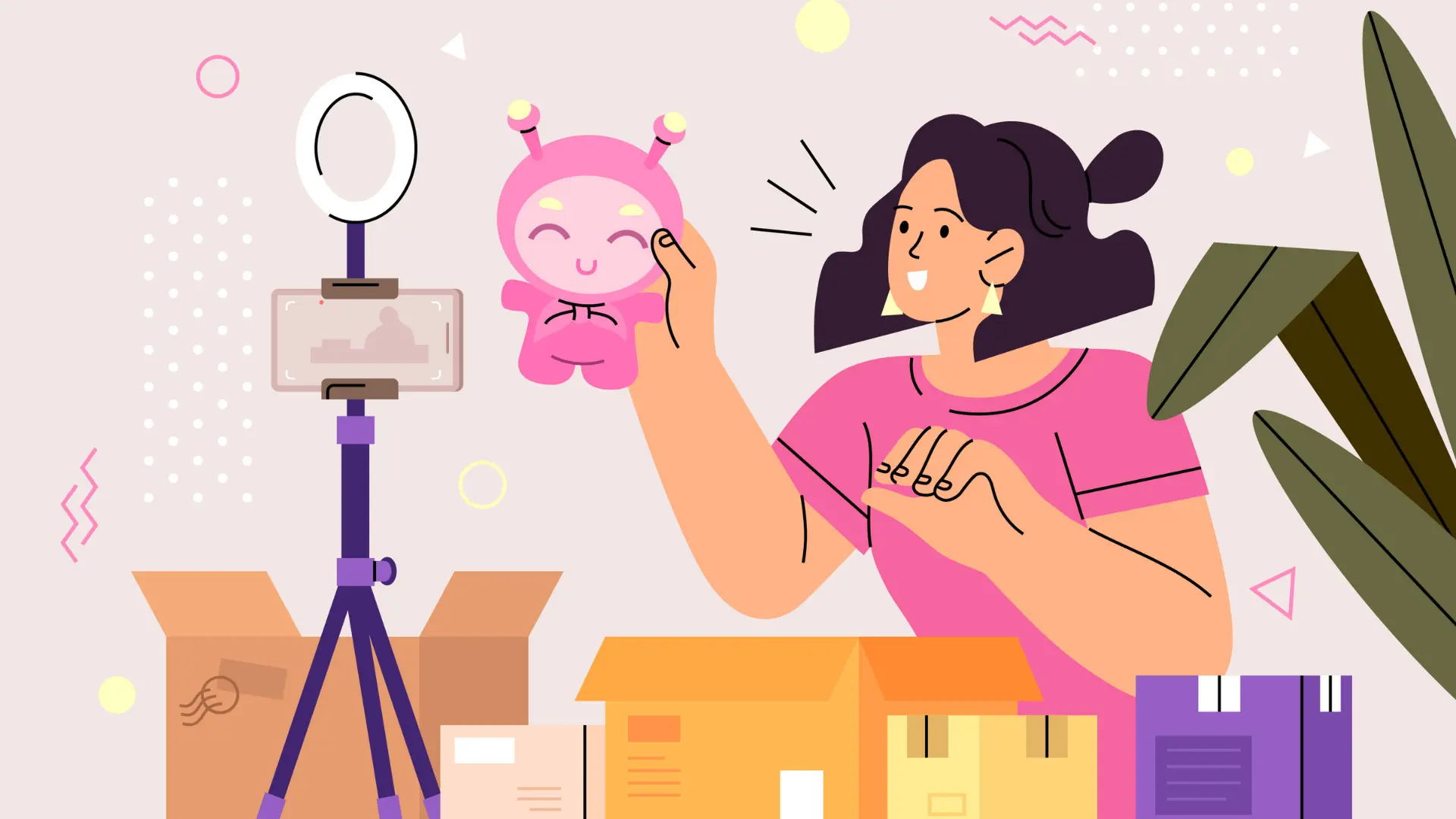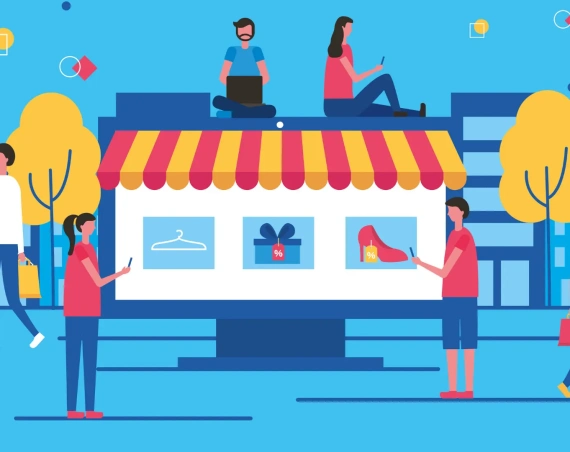
What Every Etsy Seller Needs to Know About Product Photography Part 1
What Every Etsy Seller Needs to Know About Product Photography, Part 1
As an Etsy seller, bringing great products to your customers is your passion. This is true whether your niche is vintage, craft materials, or finished articles. However, selling your items on Etsy can be harder than it looks because customers need to know what they are buying and its potential. Customers make that decision based on your listing, which includes a description and up to 10 photographs.
Photographs are typically much more influential in a customer’s buying decision than the written description. That’s because descriptions help the Etsy algorithm categorize and rank your products, and for customers to find them. However, photographs become very important once a customer gets to the results page. Think about it this way: When you browse a catalog or an e-commerce site, the pictures determine which products you click on.
With that said, not every photograph is made equal. Ideally, your pictures should showcase the product in the best possible light. Your overall collection of photos for an item should showcase every aspect of the product and make a compelling case to customers.
In this article, we will look at ways to take great photographs that will help sell your products. In the process, we will talk about both equipment and techniques. These tips we give are of great importance for every Etsy seller.

Choosing the right cameras for your photos
Your first step to great Etsy product photos is a camera. For most of us, the most familiar type of camera is our smartphone. And when you are taking selfies or recording special family moments, smartphone cameras are very convenient. Furthermore, with careful planning, you can use these cameras to take Etsy photographs.
However, as Etsy points out, getting top-quality, high-resolution photos from a smartphone camera can be difficult. That’s because, until recently, the technology was not as good. Newer models are better, but you still have to be careful about your technique. Still, skilled photographers can get great results with their smartphones.
Sellers who don’t want to buy a high-end smartphone or would prefer to use more professional equipment have other options. The most common are compact (point-and-shoot) cameras and DSLR cameras. Before smartphone cameras were capable of producing decent images, your average tourist would carry a compact camera with them. For Etsy sellers, using compact cameras can be advantageous because they offer several automatic settings to improve picture quality. By contrast, smartphones have little more than a zoom function.
A DSLR might be a better choice if you want a professional-grade camera. You’ll see these cameras with a pronounced zoom lens, so they tend to be very bulky. A large percentage of professional photographers will opt for a DSLR. As an Etsy seller, this might be your choice if you want super high-resolution photos and don’t mind learning how to use a complex camera. And you can get plenty of accessories, such as fancy lenses, to help take the best photos possible.
Using a DSLR camera is likely a good idea if you sell artwork since these take up more details than the other common options.
Other equipment you should consider
Besides a good camera, you will need the right accessories to take good pictures. After all, environmental factors like lighting, backgrounds, and the position of your camera can have a major effect on the final product. Here are some basic Photography tools that you should have in your Etsy seller’s toolkit.
The right lighting accessories
One of the most important things you can have as an Etsy seller is the ability to get a good light on your subject. That’s because proper lighting displays colors, textures, and fine details the most accurately. Shadows and flashes of light can ruin your picture.
Fortunately, you can get great lighting with a few inexpensive tools. For example, you can make a lightbox with foam board, paper, and aluminum foil. Lightboxes are very practical for small items like jewelry or accessories. They work by distributing light evenly so that it is not too harsh and doesn’t leave shadows. All you have to do is place your item in the box and provide a reliable light source. Light and’s are similar but made with white fabric draped over an area rather than having hard walls.
Another option is a softbox. Softboxes are those big square structures that you’ll often see on a stage or in a photography studio. They contain lights behind a soft-focus plastic shade and are mounted on giant tripods. These are a great option if you sell larger items, such as vintage fashion or furniture, because they provide consistent lighting across a bigger area.
Finally, reflectors and bounce cards help to distribute light by reflecting it in different directions and improving distribution. This helps prevent reflections and shadows in the final product.

Other photography accessories
A few other items will make your Etsy photography efforts significantly easier. They should also enhance the quality of your photographs and the story they tell about your products.
First, you need something to hold your camera steady while you take the picture. The classic solution is a camera tripod. With the tripod, you will attach your camera to the top. Tripod height is easily adjustable, and it’s also easy to reposition. For smartphone users, a phone holder may work better. Some phone holders can sit on top of a tripod, while others may need to be placed on a table or other hard surface. Either way, these devices will keep your camera shaking and provide a clearer image.
Second, depending on your photography subject, you might benefit from a remote control or shutter button. These are especially useful if you sell items like vintage clothing because you might model some of it yourself. Alternatively, you might do a model such as with somebody wearing your products and want to help them with the proposed. Once everything is perfect, you can push the shutter remote button rather than returning to your camera.
Finally, consider a seamless backdrop. These are also called sweeps; the most common type is a wrinkle-free white cloth or piece of paper. Sweeps go from a high position, such as a roll above a photography site, to a low position, like a table. The backdrop is allowed to fall naturally, with just a curve. These are great for taking pictures of relatively large items that need a neutral background.
Getting the Perfect Photo
Once you have the proper equipment, it’s time to take pictures of your products. It’s important to remember that Etsy allows up to 10 images per product listing, so you can use photographs of different angles and distances. You can even include some pictures of a finished item (for kits or personalized items) or the creative process (for artisan handcrafted pieces). This way, people can see the potential of your product or understand your creative process. However, photos like these still require basic techniques.
The light should be just right
Before you pull out the camera, make sure that you have the right lighting on the subject. Ideally, there shouldn’t be any obvious shadows, harsh reflections, or washed-out color. You also want to pick the type of lighting that will best showcase the colors and textures in your product.
First, decide if you want to use natural or artificial light. Something that customers would frequently use outdoors will likely benefit from natural lighting. So will items where color is especially important, such as in the craft materials space. On the other hand, artificial light is something that anybody has access to, and you can take pictures even at night. It’s also relatively easy to control artificial light by changing lightbulbs or repositioning fixtures.
If you’re going to use natural light, experts recommend that you capture the light in a way that makes it soft. For instance, a cloudy day that still has plenty of light is an excellent time to take pictures. That’s because you won’t have many shadows, and sufficient light should produce a clear image. You can also take advantage of natural light by setting your items up close to a window or on the porch. Here, the building provides shade and minimizes shadows.
Finally, be sure to use just one type of light for each photograph. Otherwise, you will have color variations that can detract from your product and produce a poor photograph.
Have everything you need close by
Nothing is more disruptive to a photo shoot than running out of supplies or discovering that you don’t have something critical at hand. Besides, if you’re using natural light, then the hunt for items mid-shoot could result in your needing to postpone further photography until another day. Therefore, be sure that everything you need is in your studio area before starting the photography session.
Your needs will vary based on your camera, environment, and the light type. However, the following are common items:
- Memory cards for your picture files, especially if you’re going to take a lot of them
- Your tripod
- The table and any lighting equipment, such as light tents or reflectors
- Background material
- Props, if any
- Your camera or smartphone
- A charger for the camera and power bank, if needed
- Remote shutter button, if you’ll use one.
If you aren’t using an item for photographs, place it on a nearby table or somewhere out of sight. Then, set up your lighting sources and background, along with your tripod and camera equipment.
Prepare your products
Once you have everything together, it’s time to prepare your products for photography. If you’re selling clothing or accessories, you may want somebody to model them. This is one of the best ways to showcase products of this type. In this case, you will have the person put on the item and then stand or sit in the photography studio area. For items that won’t be worn, set the item up in your lightbox or other lighting setup.
Make sure it’s right
Before you complete the entire photo shoot, experts recommend doing a few trial photographs. This lets you perfect the lighting, camera settings, and other variables. You may need to adjust shutter speed, ISO settings, autofocus, and other features for your camera. Options for adjustment will vary based on the make and model, so familiarize yourself with the owner’s manual and take pictures of other objects until you’re comfortable using the features.
You may also need to adjust the lighting. In some situations, you may have too much lighting or too little. You might also discover that there are hotspots or excessive shadows, which will often disappear as light sources and other equipment are moved around. If you’re using natural light, you may decide to try again at another time of day or make changes, such as the photography location.
Over time, you’ll find that it’s easier to get the ideal settings with fewer changes. Good Etsy photos taken in ideal settings also play a big role in increasing your conversion rates.
Frame a winning shot
Finally, you should always use good framing techniques. In photography, the term framing refers to how a photo displays the article of focus. It’s easy to think that framing a picture should typically involve putting the focal item at the center of your photograph. Certainly, your Etsy photo shoot should feature some pictures of your product that have been set up this way. However, there are other options that can be very effective.
On Etsy, a common alternative leverages the “rule of thirds.” Using this technique, a photographer will place the item of focus slightly off-center. Then, our guys have the level in order to see the object of focus, which singles out that item as most important.
Another option is the “rule of odds.” Here, you will photograph more than one item. In fact, you’ll add items to the primary one in order to create an odd number. This very effective visual technique keeps the eye interested in your photograph. It’s also an excellent way to sell items that go together, such as matching winter accessories sold separately. In that case, you’d put the same photo on each product page to cross-sell between listings.
Lastly, try using negative space. Negative space is a part of a photo that only contains the background. For an Etsy product photo, negative space would involve something other than just a white or plain colored background. Some examples could include a wooden surface or a freshly mowed lawn. The latter could be very effective for sports equipment, such as a personalized golf ball or handmade baseball glove. This technique takes practice, but the results can be stunning.
Enhance to perfection
Even the best pictures can often benefit from a touchup. Basic photo editing can turn good photographs into something truly special. This process is easy to learn, and several free or inexpensive photo editing applications are available online. Some of them are even mobile-based, so you can edit your pictures on the go. However, be careful not to go overboard — as Etsy points out, certain features or special effects can harm your photos’ accuracy or compelling nature.
Some photo editing features are especially useful. For instance, cropping an image can let you comply with Etsy’s formatting rules. Similarly, you can enlarge a specific area of your snapshot to highlight product details. You might add that as an inset photo to the source picture or post it separately for enlargements.
Another useful feature of photo editing software is that you may be able to correct the lighting. Here, you should ensure that artificial lighting changes won’t support the colors or textures of your product. However, done properly, this type of correction can produce very accurate images.
Final thoughts
Once your photographs look nice and represent your product well, it’s time to add them to your listing. Ideally, you will post several photos of each item from various angles. You may even want to add photos that showcase your item’s use or inspire potential customers to purchase the item for a specific purpose. Often, other photo types, like detail shots or pictures taken for scale, will also help sell your product. Ultimately, the object is to present your items in the best possible light to the people most likely to buy them.

